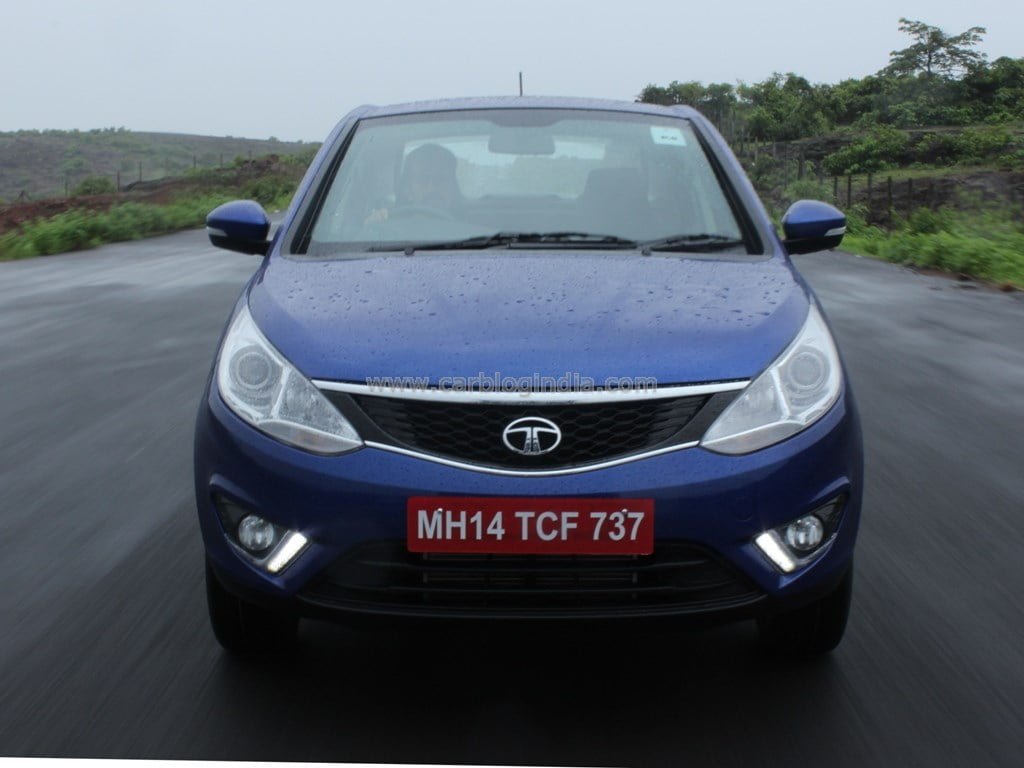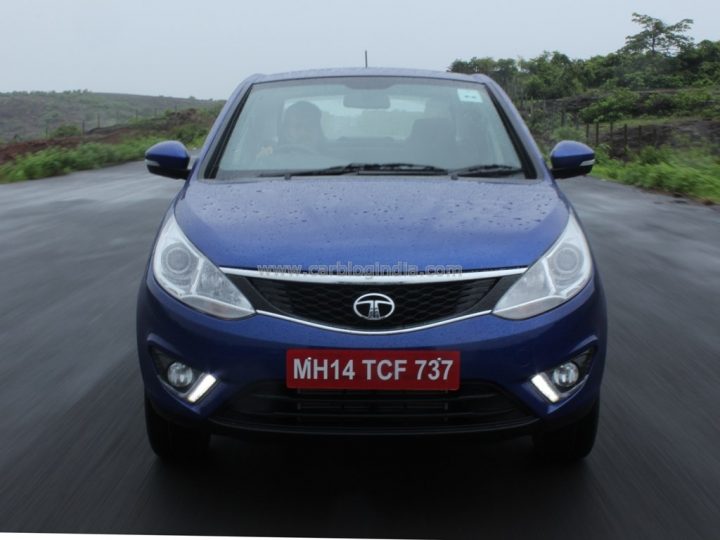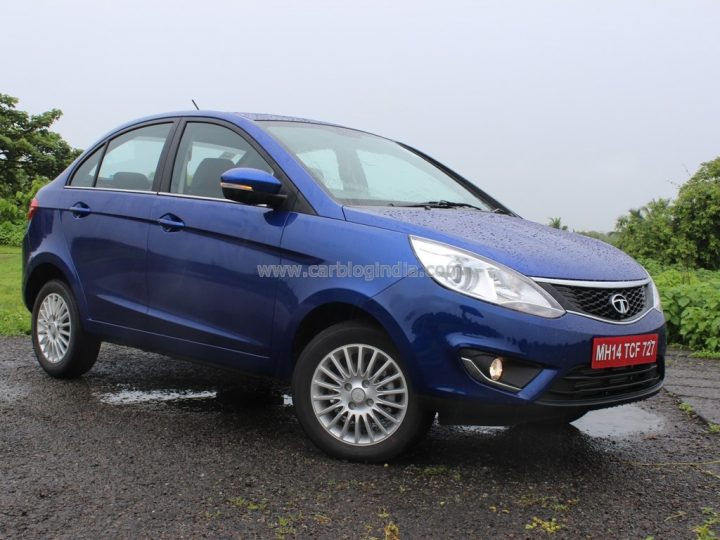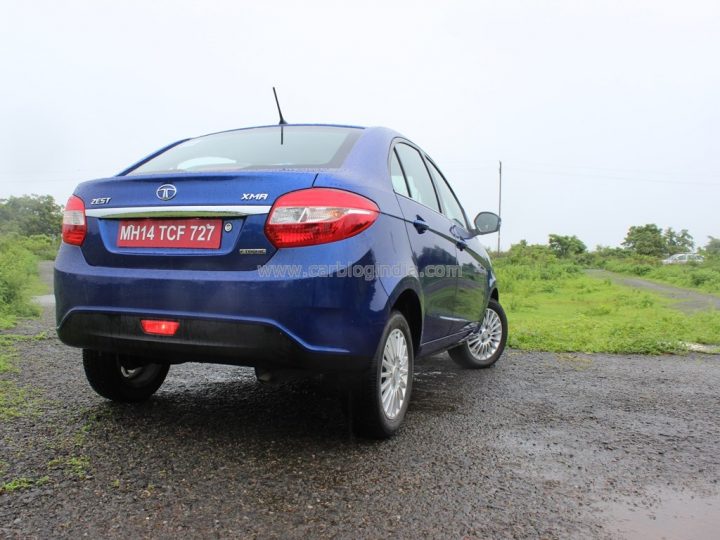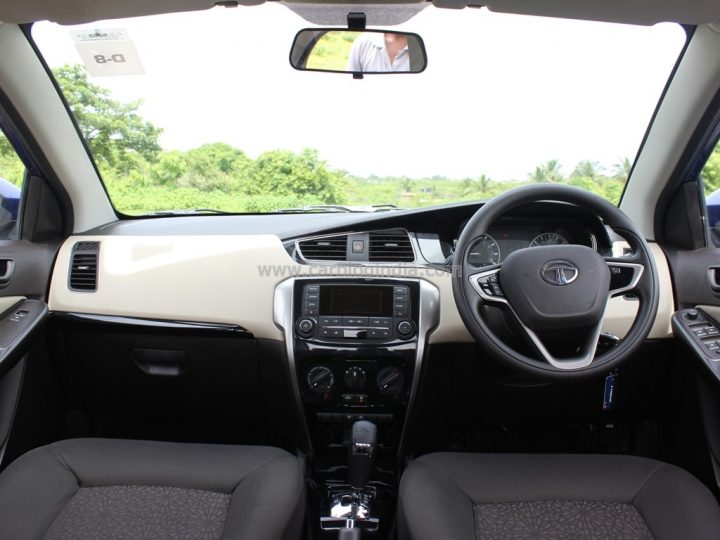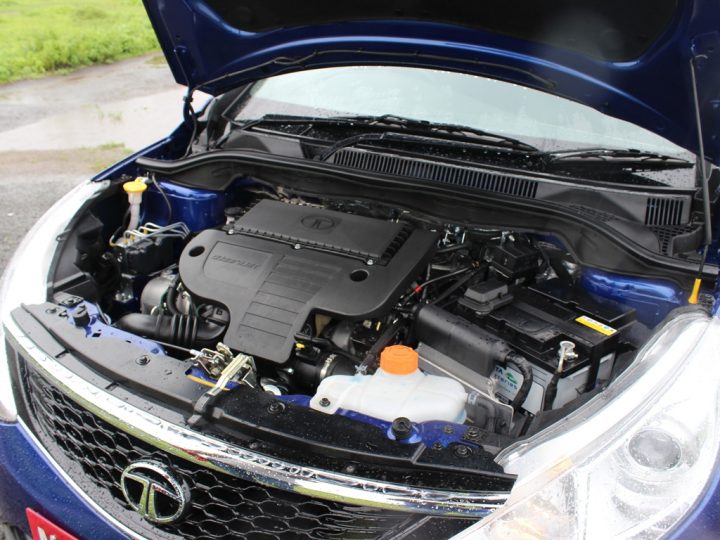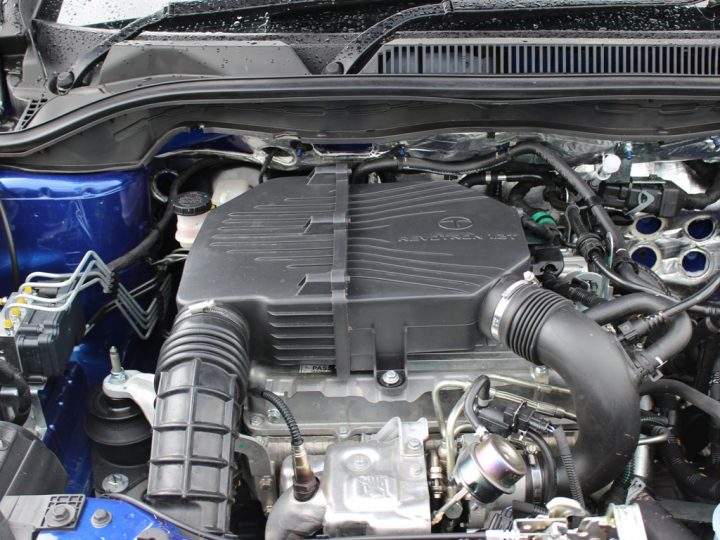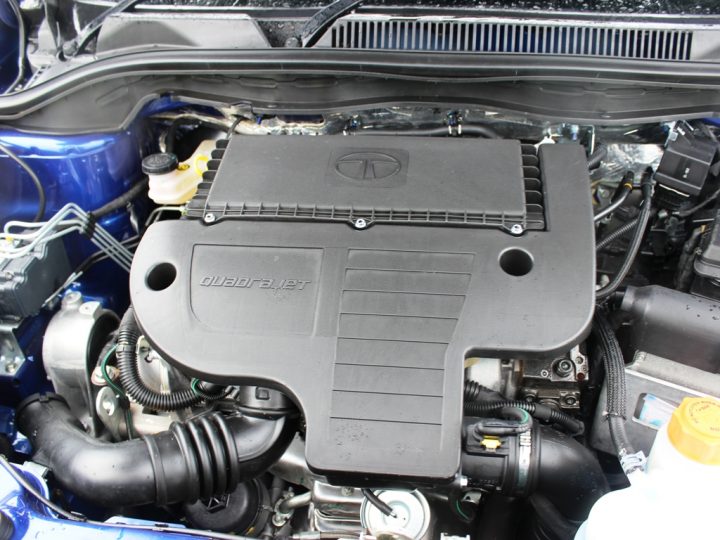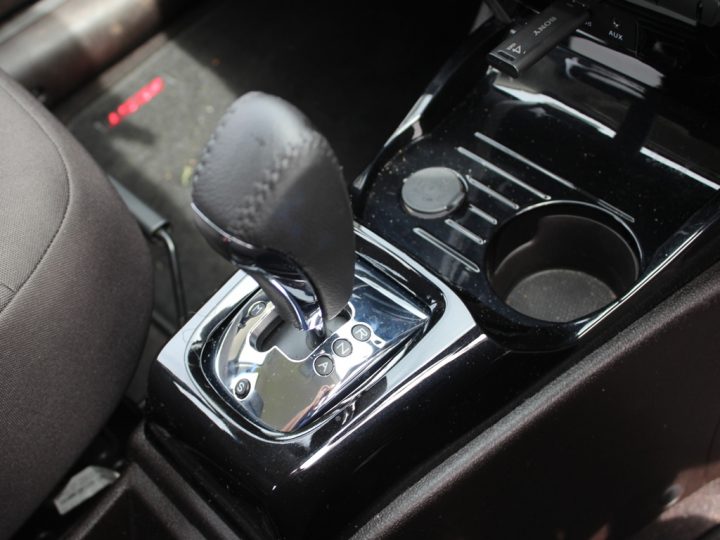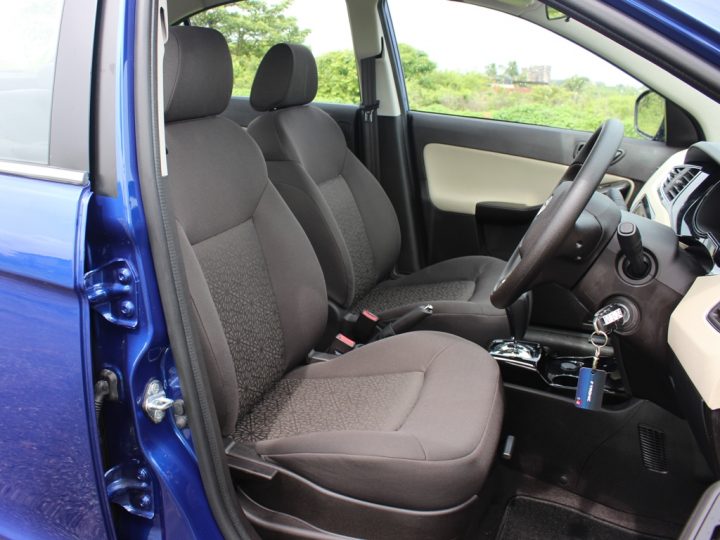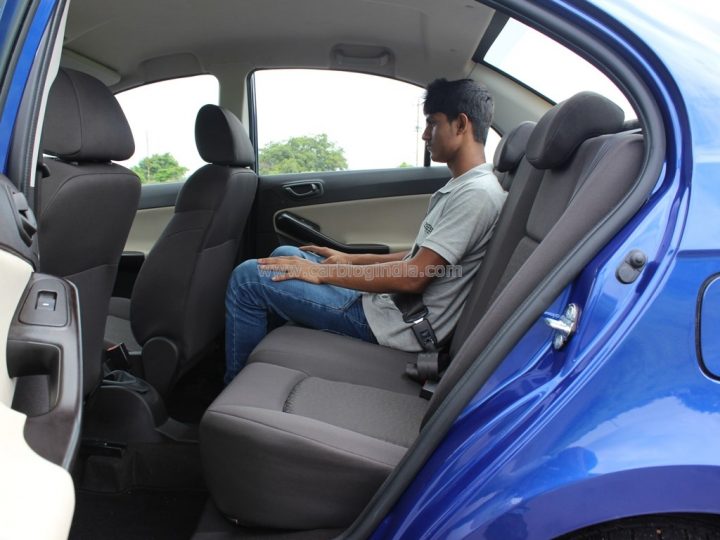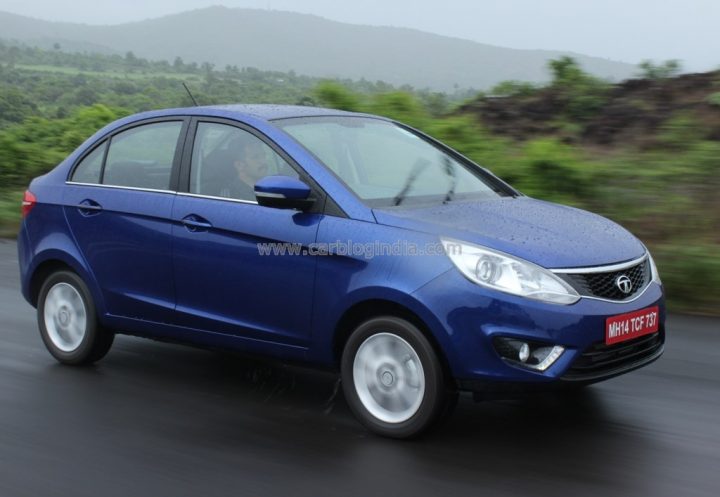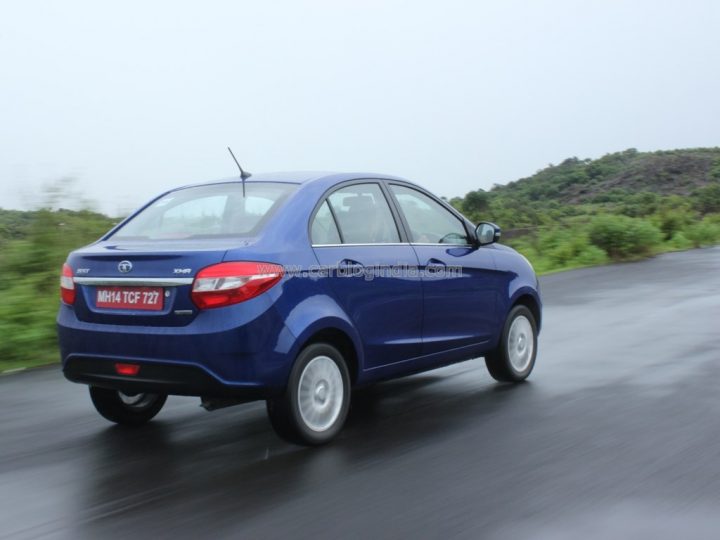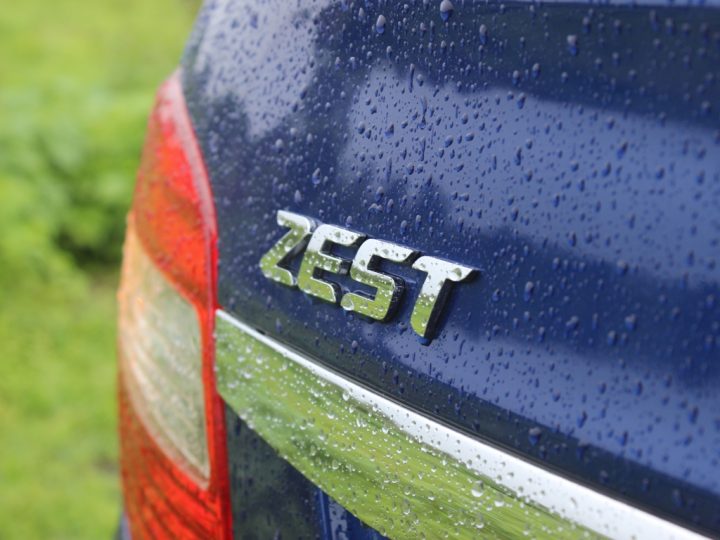The Tata Zest has taken the automotive scene in India by storm; first shown at the 2014 Indian Auto Expo, we were impressed by the new direction that Tata had taken with the Zest compact sedan and the Bolt hatchback. Both showed the renewed commitment shown by the company to improve it’s standing in the market.
Improved products are the first impression that you can use to attract customers towards you and Tata has hit the nail by announcing a compact sedan which is filled with many first-in-segment features. A diesel engine paired to an AMT and a new first-in-segment turbocharged 1.2-litre engine along with features like a music system created with the help of Harman may make this one of the most desired for compact sedans in its segment. Tata is also offering the ‘333 Confidence’ package with the Zest, which will include a warranty of 3 years (or 1 Lakh Km, whichever is earlier), an annual maintenance contract fo 3 years (or 45,000 Km whichever is earlier) and free roadside assistance for 3 years.
Price
Diesel Variants
- Zest XE : Rs. 5.64 Lakh
- Zest XM : Rs. 6.27 Lakh
- Zest XMS : Rs. 6.45 Lakh
- Zest XMA F-Tronic : Rs. 6.99 Lakh
- Zest XT : Rs. 6.99 Lakh
Petrol Variants
- Zest XE : Rs. 4.64 Lakh
- Zest XM : Rs. 5.25 Lakh
- Zest XMS : Rs. 5.43 Lakh
- Zest XT : Rs. 5.99 Lakh
All prices are introductory, ex-showroom Mumbai
Video Review
In Brief
The 2014 Tata Zest:
- Is an all new car, made from the ground up
- It gets new design elements that will feature on future Tata cars
- Is powered by either a 1.3-litre diesel motor or a turbocharged 1.2-litre petrol engine
- Will be the first compact sedan in its segment to offer a AMT paired with a diesel engine
- Gets unique features like an 8-speaker Harman audi0 system, multiple features that can be controlled via voice commands
- Stuff like dual-path front struts and anti-pivoting measures ensure better ride and steering feel
- Does not lose out on spaciousness seen on other Tata products
What’s New?
Design
The Tata Zest introduces a new design philosophy for Tata motors passenger vehicles department. It is an evolutionary design if seen from some angles but that is because the company wanted the car to be still recognised as a Tata product. At front the new headlamps and grille constitute of what Tata calls the ‘Humanity Line’, which leads to a more grown up look of the design already seen on some older Tata cars like the Manza or the Vista. Move the the side and the glasshouse design is termed as the ‘Diamond DLO’, the rear three quarters consists of what the company calls the ‘Slingshot Line’ which gives the car a dynamic look.
From the front the car definitely looks good, the multi-element headlamps, with integrated projector lamps and indicators give the car a smart look. You can see the wedge-like shape that has been given to the front when the headlamps and grille are combined. The grille is topped by a chrome strip which is not too garish and gels well with the all black honeycomb grille. The bumper is dominated by the lower air-dam which is flanked by fog-lamps, which on the higher variants gets integrated DRLs. The 15-inch alloy wheels look good and personally I liked the ones which were on the petrol variant we tested. The car looks the best from the front 3-quarter which shows off the smart front, the spacious looking cabin area and the stubby boot.
Move to the side and you see two lines which keep the body from looking boring. Chrome strips along the bottom of the windows give it a premium feel, which is also a given in this segment.
Move to the rear and we get mixed signals; individual design elements like the LED rear position lamps, thick bumper with integrated fog lamp, boot-integrated number plate holder and a strip of chrome make the rear pleasant. The rear tail-lamps though can divide opinions though, some of us find them too big. Overall the design is a refreshing change for a Tata product and is good compared to the other cars in its segment. Looks are subjective, still according to me this is not the best looking compact sedan in the market.
Moving inside, the Tata Zest is miles ahead as compared to previous products from the company. The design team at Tata spent a long time making sure that the interiors were as exciting to look at and sit in as ever, and it shows. The design is very mature, stuff like the dual-tone dashboard, asymmetrical centre A/C vents, three-spoke steering wheel with integrated multi-function buttons make the car look good. The instrument cluster is very easy to read and has an integrated digital screen which shows driving related features.
Paint Options
Buzz Blue (The car pictured here), Sky Grey, Platinum Silver, Dune Beige, Pristine White and Venetian Red.
Engine
The Tata Zest is powered by either a 1.2-litre turbocharged petrol or a 1.3-litre turbocharged diesel in two configurations. A five-speed transmission is standard with both engines, a 5-speed AMT is provided only with the diesel engine.
Tata Zest with the Revotron 1.2T Petrol
The Tata Zest will debut the Revotron 1.2T turbocharged petrol engine, the first one the kind in the segment. The engine is a 1.2-litre four-cylinder turbocharged unit which delivers 89 BHP of peak power and 140 Nm of maximum torque. The Zest petrol feels very different from the other petrol cars in this segment, the low and mid-range torque help it pull easily from low speeds on higher gears and the top end power give it a good punch, the engine feels a bit sluggish after the initial surge of torque and picks up speed as the revs rise. You will have to keep the engine on boil to keep the car at a brisk pace, downshift as soon as the needle goes below 2,000 RPM and upshifting as soon you reach 5000 RPM. If you want to drive relaxed, the peak torque from 1750 – 3500 RPM helps keep gear changes to a minimum and will definitely help driving in the city. The 5-speed gearbox paired to the petrol engine is easy to shift and the ratios match the strengths of the engine perfectly. Tata says that the 1.2T delivers 17.6 KMPL under test conditions.
Tata has another ace up its sleeve, the Revotron 1.2T comes with three driving modes, essentially each ‘mode’ gives a different throttle mapping. The standard mode is called the ‘city’ mode, where the throttle response is good but it also helps deliver good fuel-economy. Switch on the ‘Eco’ mode button on the lower centre-console and the power becomes very linear and almost lazy, this has been done to maximize efficiency andis best used when cruising on the highway. The ‘Sport’ mode changes the whole feel of the car and is obviously our favourite; it extracts the most out of the engine allowing it to rev out it’s limiter somewhere after 5000 RPM mark and also making it taught at the lower RPMs.
[box type=”info” width=”720″ ]Read more about the Revotron 1.2T engine here[/box]
Tata Zest with the 1.3-litre Quadrajet Diesel and AMT
This is a tried and tested diesel engine which most of you will be familiar with. The 1.3-litre, 4-cylinder unit from Fiat does duty on so many cars in the Indian market, and now it does duty under the bonnet of the Zest too.The engine specs look familar, 89 BHP @ 4000 RPM and 200 Nm of torque @ 1750-3000 RPM, but what we need to talk about is the transmission that will be offered on some diesel variants; a 5-speed AMT. Tata will offer a 5-speed Automated Manual transmission on the lower diesel variants of the Zest to price it aggressively just like what Maruti did with the Celerio. This will be the first diesel compact sedan in the segment to be offered with an automatic transmission, which will give Tata a lot of brownie points as people have taken a liking for such cars. The AMT is a unit sourced from Fiat group company,Magneti Marelli; they also source AMTs to Maruti.
We will say that the AMT, even though it has a sport mode, is best suited for those who employ a sedate driving style. It takes it own sweet time to disengage and engage the clutch which is a bit irritating if you are looking to drive aggressively. But we can bet that it will be instrumental in providing high fuel-efficiency numbers (Tata did not disclose any fuel-efficiency figures at the drive, we will let you know as soon as they release the data). Even when driving very roughly, the real-time fuel-efficiency indicator was showing that the diesel motor was returning about 14 KMPL, so you can imagine that it will deliver more for daily drivers. Official fuel-efficiency figures are awaited. Those who love driving though should stick to the manual transmission variant of the car, which we could not test (we will though in the near future).
[box type=”info” width=”720″ ]Read more about AMT transmissions here[/box]
Tata Zest with the 1.3-litre Quadrajet Diesel and Manual Transmission
The base XE diesel variant of the Zest is powered by the same 1.3-litre Qaudrajet engine but it produces less power than the engine mated to the AMT. The engine is mated to a 5-speed manual transmission and produces 74 BHP @ 4000 RPM and 190 Nm @ 1750 – 3000 RPM. Claimed fuel-efficiency is 23 KMPL
The rest of the variants are powered by the more powerful 89 BHP variant of the Qaudrajet engine. Fuel-efficiency figures are awaited.
We were not given the diesel-manual variants for testing at the media drive. We will update this segment of the review once we test drive the car. Stay tuned.
Comfort
Tata cars have been always been class-leading good in terms of interior space and the Zest improves on this area. The materials used inside give the cabin a good feel, the dual-tone black and beige trim gives the car an airy feel and the design looks smart. The plastics around the cabin feel good to touch, there are no sharp surfaces as such but we did find one fit-and-finish issues on the diesel variant; considering that we were hard pressed to find any niggles with the car, we can safely say that the Zest is a leap forward in terms of fit-and finish as compared to previous cars from Tata.
Getting in and out of the Zest is easy, the wide opening doors, low sill and lots of legroom help out a lot. The front seats are very snug and hold you well, preventing you from sliding off if you take a corner too aggressively. The driver will find the new three-spoke steering wheel a joy to hold, it has built in grips at the 10′ o Clock and 2′ o Clock position and is not too large in diameter. The steering can be adjusted for rake and along with the seat recline and seat reach adjust provide for a good driving position. The pedals are placed well, and are not awkwardly positioned like some of the older Tata cars; there is no dead pedal available on any variant. Most of the controls are within easy reach of the driver, we think steering mounted controls will be available on most variants which should make controlling the multimedia system easy, voice-control on higher variants is much appreciated and is a first-in-the segment feature.
The rear passengers will find the soft seats at the rear pleasant to sit in, but we think this could become tiring on long runs. The seat-back angle is good, the thigh support is adequate, legroom is fantastic and so is the headroom and shoulder room. It will not be a problem seating 3-medium sized people side-by-side in the Zest, though the centre passenger will find the tall central tunnel is a bit of a hassle. Those who think that not having a rear A/C vent is an opportunity lost by Tata can think again, as the front A/C vents cool the cabin effectively.
The cabin is littered with small spaces to keep knick knacks, the door pockets are wide and can accommodate 0.5-litre bottles easily, the centre console has space for another 500ml bottle and a small recess to keep your mobile phone. The glovebox compartment is cavernous and can easily gobble up a net-book. The trunk has a capacity of around 390-litres and is well design to accommodate a lot of luggage. Two bars behind the rear seats stop the luggage from jutting onto the seat-back.
Features
Variant wise features are as follows:
TBA
Driving
This is the biggest surprise of the many that you will experience driving the new Tata Zest. The driving dynamics of this car is one of the best we have experienced on any Tata car. Tata began developing the Zest and the Bolt about 3 years ago and making it a comfortable but fun to drive car was high on the priority list for Tata engineers, and they have delivered. Bumps and undulations are handled by the suspension noiselessly at any speed, only very sharp ruts filter through with a damped ‘thud’.
The Electronic Power Assist Steering (EPAS) unit is responsive at all speeds and instills confidence even when cornering hard. Safety systems like ABS and Corner Braking Stability (a first in this segment) keep things tidy even at high speed corners, even when the road is slippery wet as was the condition in Goa when we were testing the cars.
Rear passengers will applaud the comfortable suspension which is taught enough to stop undulations from making the car bounce around. The drivers will love new systems incorporated by Tata, like the dual-path struts and anti-pivot system which give great steering feedback, reduce steering shake at high speeds (remember the old Tata Indica?) and improves stability.
Drivers of the diesel AMT will enjoy these features but will wish that the AMT was not so sluggish. The Zest petrol variants though, are the ones you want to go for if you want a more driver oriented car; the Revotron engine (on sports mode), the five-speed manual and the improved dynamics make it one of the most fun to drive compact sedans in the market.
Video Review
Conclusion
The Tata Zest feels like a very good contender in the compact sedan segment. It is a good looking, equipment laden, hugely spacious compact sedan which has got over many defects which plagued Tata products from the yesteryears. If priced right, this could take the market by storm. Till then all we can say is: you have got to try it out, it’s a Tata car like no other.
What do you think? Let us know in the comments section below.
[box type=”info” width=”720″ ]We Compare The Zest With Its’ Competition Here[/box]
[review]

